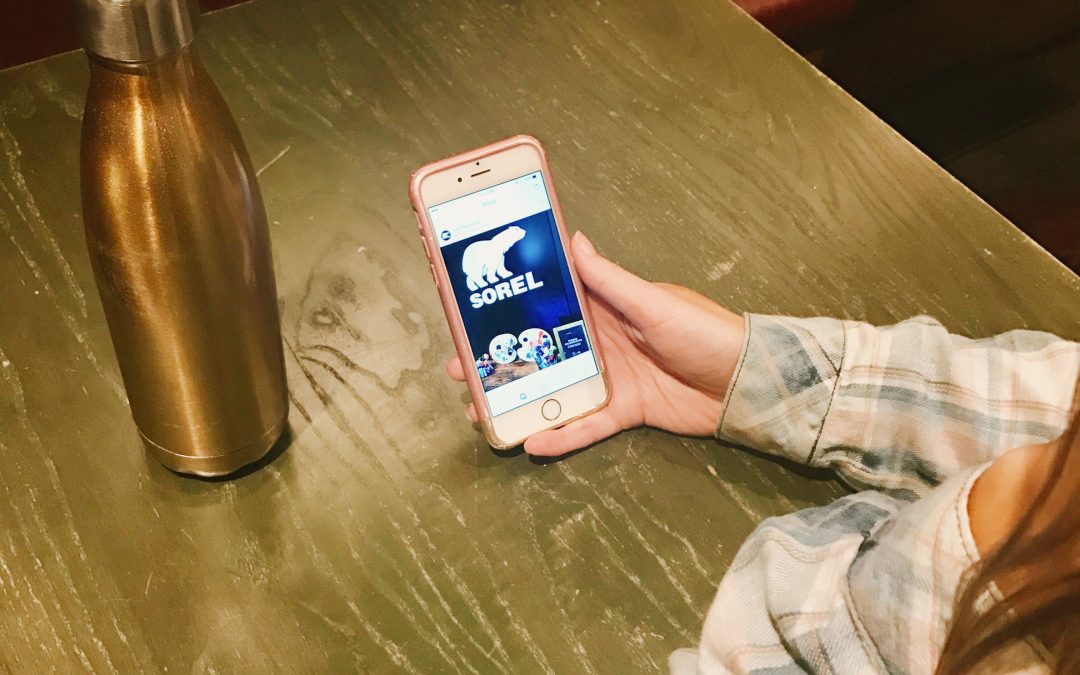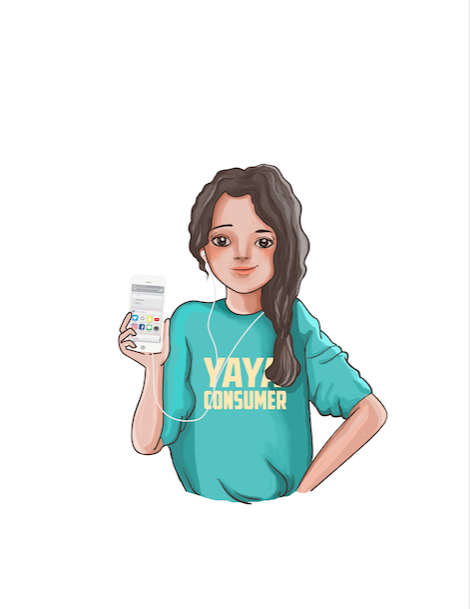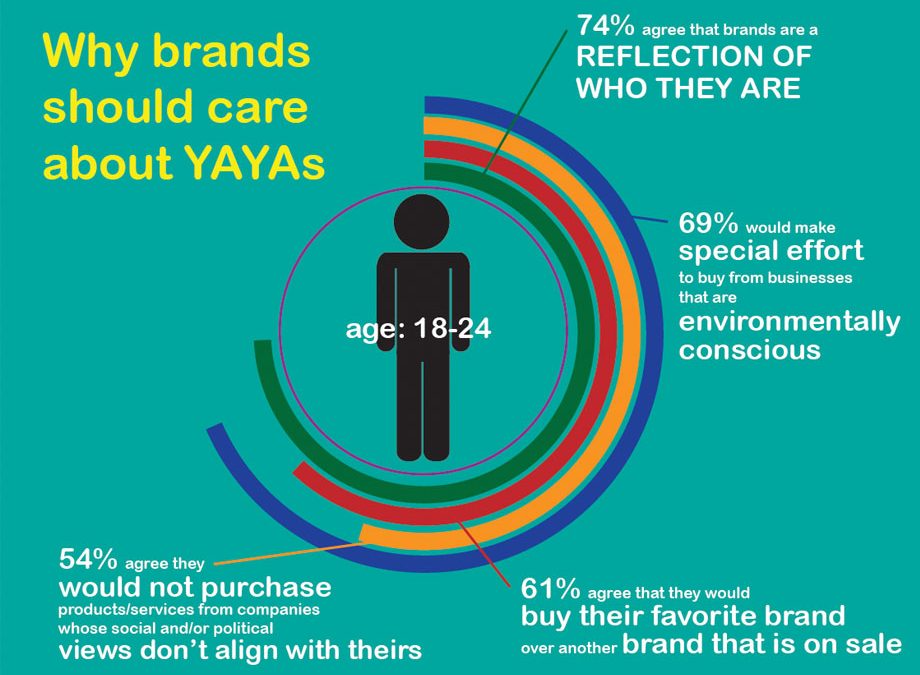
The Youth and Young Adult (YAYA) market is putting relationships first. With brands, friends and peers, YAYA consumers crave connection both offline and online. It is important for advertising and PR agencies to keep in mind that traditional public relations and advertising communication efforts are not enough. According to Forbes, only 1 percent of millennials surveyed said that a compelling advertisement would make them trust a brand more. It is vital that companies create a sense of community, presenting themselves in an authentic way among their target consumers in order to gain their trust.
So, how exactly can you appeal to us? Here are some public relations trends that will help you stand out.
Traditional is not so Trendy
Technology has changed the PR game and as a result, traditional tactics don’t cut it with today’s consumers. Long gone are the days of when the good old press release was dominant. Branded content focused on digital channels has taken over. Rather than pushing out information with a traditional press release, digital platforms can deliver the brand’s message to a more tailored target audience. According to Ragan’s PR Daily, “Brands often turn away from traditional PR tools in favor of building brand channels that let them narrate stories adjusted to the customer’s needs and purposes. Brand journalism is content written in journalistic style, brand stories engagingly told.” According to Forbes, some other trends to keep in mind are to, “Take advantage of social media, develop relationships with industry leaders and influencers, and incorporate quality visuals in your messages to get the attention of journalists and outlets that can help you spread your message.”
One aspect of PR that will always remain important is building a solid relationship with journalists. The difference is that relationship now happens on social media or through IM. If you can get to know journalists face-to-face – maybe in a traditional setting like a conference or event – you can continue to build that relationship virtually. Journalists can post on Twitter that they are looking for a source on a given story and you can step up and provide that, making your organization look smart and responsive in the process. Now more than ever with the ability to find information at their fingertips, journalists have little time to read press releases and they don’t need you to find a story. By building a mutual relationship with a few journalists, they will become your go-to contact and in turn they will rely on you as a key resource for information about their stories.
Be Where They Are
YAYA consumers are in constant communication with one another and enjoy sharing as they share their experiences through social media. According to Social Media Week, half of millennials aged 18-24 years feel that brands say something about who they are, their values and where they fit in. It’s important for brands to meet YAYA consumers where they are and connect with them through social media. By offering video ads, sponsored geofilters and geolenses, Snapchat is changing how the YAYA market communicates their everyday experiences to their peers. This constant gratification translated to relationships with brands, as YAYA consumers prefer brands that communicate with them. According to PR Daily, Snapchat offers video ads, sponsored geo filters and sponsored geolenses as opportunities to engage with the core audience of 18- to 24-year-olds. Snapchat tactics allows and allowing brands’ advertising to become integrated into the daily lives of YAYA consumers.
Play Games with Them
BuzzFeed (yes, the instigator of those crazy quizzes that tell you what ‘90s TV character you are based on your zodiac sign) is leading the way in connecting with the YAYA market. According to Business Insider, “A big part of BuzzFeed’s business model revolves around using Facebook and other social media advertising to drive readers toward branded, “native” content.” YAYA consumers start their day by looking to these outlets in fact, as 50% percent of 18- to 24-year-olds go on Facebook when they wake up and immediately turn to Facebook. (https://zephoria.com/top-15-valuable-facebook-statistics/). In order to connect with this demographic, public relations efforts must engage them in a way that allows these YAYA consumers to grasp a sense of a brand’s personality and sense of humor without sounding too promotional.
If you keep these three key values in mind, the YAYA market will be receptive of your public relations efforts and become eager to allow your brand into their lives.
Written by: Miranda Lee, Marta Witko and Julia Brun

YAYA consumers are dependent on their phones, using them as a platform to keep up with what their friends are doing and manage their social lives. One of their top management tools is a filter, which is just as important as the picture itself nowadays.
Filters give YAYA socialites the creative license to transform a flat and boring photo into an ideal, colorful image. According to Canva, a unique design software program, “applying a filter can increase the number of views and comments your post receives.” So, which filter will lead to the most likes? Canva says America’s number one most-used filter is Clarendon because “it’s an all-purpose filter that brightens, highlights, and intensifies shadows for color that pops. This is no secret to YAYA consumers who can filter, edit and crop their images for any social network. Facebook now offers editing options for profile pictures based on the weather or season, and Instagram is constantly updating its filter options for users. If these filters don’t meet the YAYA demographic’s fancy, they know where to find more: Photo editing apps like VSCO offer countless filters and enhancers to position a photo (and social appearance) in the best light possible for followers and friends.
So why do filters matter so much to this age group? In a joint study done by Yahoo and Georgia Tech, adding a filter increases engagement. “By using the “right” filter, you can increase a selfie’s viewability by 21%, and the number of comments by 45%,” said Refinery 29. YAYA users know that a high-quality photo receives more favor, which is why they take their social media appearances very seriously. It’s not uncommon to hear YAYA consumers talk about their Instagram aesthetic; the filters they use and the quality they put forward is considered to be a direct reflection of their personal brand.
To them, the perfect filter is crucial because this age group is drawn to visually appealing content. After all, our brains process visual cues 60,000 times faster than text. This is why businesses must capitalize on good, quality photographic content. Marketing products with a visually appealing aesthetic increases the probability of connecting with the YAYA population. According to the website Campaign, “Brands are realizing that by combining their messaging authentically with art and innovation, additive experiences can be created for consumers.”
Ultimately, marketing products visually through social media will increase product exposure among the 18-to 24-year-old age group, which is critical because they will soon be prime decision makers in companies, families and other organizations. So, when in doubt, use a filter and the YAYA population is sure to pay attention and give it a ‘like.’
Sources:
Written by: Claire Zou, Kristy LaRue and Laurel Kasten

Internet slang has a place, but is that place in advertising? Text lingo and abbreviations are serious things for a brand to throw around because audiences are so polarized on the subject. There’s no doubt that brands use “slanguage” to target the YAYA demographic, but what do 18- to 24-year-olds really think of text talk?
Although keeping the vocabulary “hip and with it” can be helpful in some situations, it’s important not to force or fake it. YAYA consumers value authenticity, so it’s vital that a brand stays aligned with its voice and personality. Nobody likes a try-hard, especially young people. Sincerity is a brand’s best bet at peaking and keeping the interest of YAYA consumers.
Using text lingo and internet slang should come naturally, or odds are this demographic will tune out your message entirely. But don’t be discouraged from stepping into the YAYA world and trying to better understand phrases this age group uses on the reg. Just double check that this tactic makes sense in the context. According to our annual State of the YAYA report, 77 percent of YAYA consumers say that it’s more important to be unique than to be popular, showing just how much they value authenticity both for themselves and from brands.
The bottom line is that text lingo and internet slang have a defined place in advertising. We’re fans because it keeps the conversation fun. Unless you overuse the word “bae.” We’re looking at you, Chili’s.*

TTYL,
Macyn, Rosie, and Brianna
*Disclaimer: We actually love Chili’s. We’re big fans of Chili’s.
Written by: Macyn Gillespie, Rosie Hutchison and Brianna Olson

Youth and young adults, or YAYAs, have more resources than ever before when it comes to shopping. Gone are the days of basing purchases on word-of-mouth or remaining loyal to the brands their parents bought. Though YAYA consumers still rely heavily on the opinions of their peers, they have access to the opinions of millions with just a few taps on their smartphones. The prevalence of online reviews, discussion boards and social media chatter has changed the way the 18- to 24-year-old market shops. According to a Mintel report, 60 percent of YAYA shoppers say they read consumer feedback about products online before buying, and 37 percent say they compare product’s online prices to those found in-store. The abundance of information allows them a sense of individuality and to venture away from the traditional brands of older generations.
Although the YAYA demographic has enjoyed online shopping for a while, they now rely heavily on online purchasing after leaving their parents’ homes. For possibly the first time, they’re shopping and paying for things on their own, so they might as well do it in the way that comes easiest. YAYA consumers grew up with technology, which is constantly becoming more efficient and pervasive in their lives. There’s no reason why they wouldn’t be lured by the speed and convenience of online shopping. According to our annual State of the YAYA report, 86 percent of YAYA consumers agree they shop online because it’s available, and 89 percent do it because it’s quick or convenient. They are in a new phase of life with a jam-packed schedule, making the balance of work or school and a social life difficult. Online shopping encourages YAYA shopper’s newfound independence and helps them take a step toward that work-life balance.
YAYA consumers also use online shopping to construct an identity for themselves. According the 2016 State of the YAYA market survey, these shoppers are extremely brand loyal, but not to their parents’ brands. With an infinite selection at their fingertips, they are departing from childhood brands and moving toward brands that reflect their adult personalities. The survey found that more than 70 percent of YAYA consumers agree the brands they choose are a reflection of themselves. Additionally, more than 60 percent say they will buy their favorite brand regardless of what is on sale.
YAYA shoppers choices go beyond the look and feel of items, as they discern what brands will say about their interests, concerns and lifestyles. More than half of this demographic agrees that they would not purchase products or services from companies whose social or political views do not align with their own. To attract these consumers, marketers need to consider what kind of social image their brand embodies. Aligning a brand with positive changes like environmental conservation or social acceptance goes a long way with YAYA shoppers.
It is nothing new that purchase habits change as one enters adulthood, and that is clearly the case for the YAYA demographic. But what is new is going through this life stage with an abundance of new technologies, social norms and means of crafting an identity. They are searching for a purpose in their young adult life while experiencing the thrill of making purchase decisions alone. Aligning your brand with the habits of these social, tech savvy YAYA consumers will get you loyal customers in no time. If your brand fits into their identity, they won’t be able to stay away.
Written by: Maddy Jones, Jamie Lazaroff and Jackie Olson

Snap Inc. has done it again. The company that created Snapchat, one of the most popular apps in the history of the smartphone, is now taking the world by storm (again) with Snap Inc. Spectacles.
If you’re thinking to yourself that the last pair of tech glasses you bought (cough, Google Glass, cough) didn’t turn out to be revolutionary, just expensive, that’s fair. However, the Snap Inc. Spectacles are different in that they will record whatever image they are focusing on, providing a point-of-view that has never been captured before. As far as the hit to the bank account, an article by AdAge stated that the cost of the glasses is a mere $129, making them attainable for even the poorest of college students looking for cutting-edge tech.
In regards to how the video will come to life, it will look a lot like footage from movies like “Paranormal Activity.” The Spectacles have the versatility of a GoPro, but allow for greater stability and no need for suction cups or inconvenient straps. Perhaps the best feature is the simple tap to record function. To create a video, simply tap the side of your Spectacles, and the glasses will record a 10-second clip that is uploaded straight to your Memories in Snapchat. Given the functionality and affordability of this product, there is no question that it will appeal to YAYA consumers.
So, the next time you reach for a pair of glasses, you might consider the Snap Inc. Spectacles that provide the best way yet to capture life’s best moments.
Written by: Amanda Manno, Brad Nachtrieb and Zach Stoner

For years, all marketers have talked about is millennials. They showered attention and money on them. But as millennials age, what should they do?
That’s where the YAYA market comes in. These 18- to 24-year old youth and young adult consumers are an elusive yet essential group for brands’ to target. Marketing to those in this life stage requires as much energy as daily exercise and flossing and it’s just as important. So when it comes to knowing what this age group is about, brands can turn to MOJO Ad for help in sifting through the fads and trends.
The YAYA market represents approximately 10 percent of the U.S. population, or 31 million people. While roughly 40 percent of YAYAs are pursuing higher education at a two or four-year institution, or are in the beginning stages of their careers, they have an impressive buying power. We know that reports indicate that millennial spending power will reach $1.4 trillion by 2020, meaning the buying power of the YAYA demographic will also grow concurrently as they move into the work force. Gaining the attention and the trust of the influential consumers in this life stage is essential for the long-term success of brands.
Possessing insight into the workings of this demographic will help brands to separate from their competitors. Current YAYA consumers believe in companies that are transparent and honest. Trying to use trite, deceptive marketing tactics won’t work for them. This is one of the many ways YAYA research can help companies tailor marketing plans to effectively reach this market.
The biggest thing for brands to remember is that the YAYA demographic isn’t a generation, it’s a life stage. So 10 years from now, when millennials move into middle age and the up-and-coming iGen is starting their families, the YAYA market will still be 18 to 24 years old. That’s why they aren’t the next big thing, they are the only thing.
Written by: Michael Wang, Maris Smith and Jacob Renie






